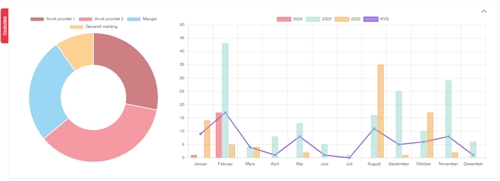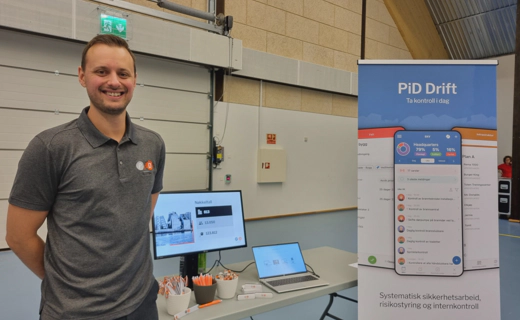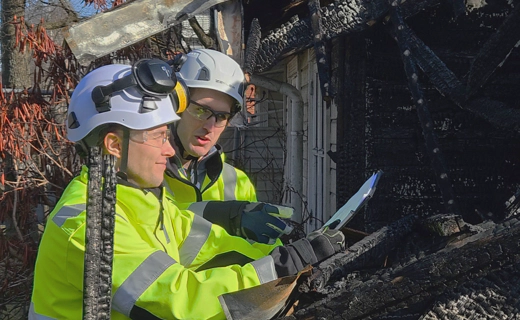PiD Egenkontroll - A guide
2024-02-22 News PiD Drift
What is “Egenkontroll”?
Egenkontroll is a form in PiD Drift that is sent out to all tenants every quarter. This is an essential part of the systematic security work and helps to obtain information about the tenants’ premises, as well as to uncover any errors or deficiencies in these. At the same time, it increases the tenants’ awareness of their responsibilities and obligations.
Current regulations require that the owner of the property facilitates the ability of users to report errors and deficiencies in the premises. At the same time, there are also requirements for the user (tenant) to report if errors or deficiencies are discovered. This form is an important part of the property’s internal control routines, and must be used by all users who conduct business on the property’s premises.
This is to ensure that ongoing, planned supervision and control are carried out to comply with the authorities’ requirements for the owner’s overall responsibility for fire safety and self-control.
Why is self-control important?
Self-control helps to obtain information about errors or deficiencies in the premises of the tenant. This allows the tenants to report conditions they have discovered themselves, and at the same time makes the tenant aware of their responsibilities and obligations. The result of this is that the property management can prioritize their work tasks in a more efficient way, in addition to gaining a better overview of the systematic safety work on the property.
By asking questions that are relevant to the different seasons during the year, we also want, through the questions, that the tenants themselves make sensible choices related to the systematic safety work.
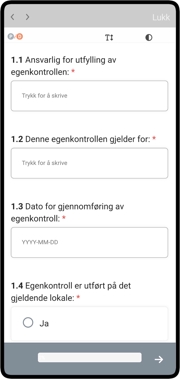
Owner and user obligations
Definition of user and owner
User is defined as someone who has taken over the right of use. In practice, this will be someone who has entered into a lease for a business, office, warehouse, etc. It can also be a department manager, who is responsible for an area, is a chef/restaurant manager, etc.
Owner defines a person or legal entity that has land registry title to the property. The owner can thus be both a natural person and, for example, a board of directors of a property company. The “Owner’s representative” is a person who has been given authority and the opportunity to represent the “Owner”.
This means, among other things, that this person must have both authorization and the opportunity to make necessary financial priorities. The “Owner’s representative” is often a property manager.
The company’s organizational chart should show how responsibility is distributed on the property and in the company.
Where are the requirements for self-control based?
Regulations on systematic health, environmental and safety work in enterprises (Internal Control Regulations)
§ 6. Samordning
When several enterprises carry out work at the same workplace, they shall, when necessary, agree in writing which of them shall be responsible for coordinating the internal control for their common activities or areas. If such an agreement cannot be reached, the supervisory authorities may decide which of them shall have this responsibility. If considerations of health, environment or safety indicate a different allocation of responsibility, the supervisory authorities may reverse an agreement entered into. When an enterprise as a client engages contractors etc. to carry out tasks on the enterprise’s own area or facility, the contractor’s internal control shall, as far as possible, be used as the basis for the activities covered by the assignment. This applies both where the assignment is carried out by the contractor personally, by its own employees or others. The client shall provide information about common rules etc. and ensure that possible deficiencies are corrected or necessary adjustments are made to its own or the contractor’s internal control.
In the regulation “internkontrollforskriften” § 6 the requirement for coordination is laid down. This means that the owner of the building must coordinate the internal control of the owner’s and user’s joint HSE activities or areas.
Self-control is an important part of fulfilling some of the requirements in Section 6. It can contribute to coordination by identifying, reporting and documenting the joint activities on the property.
Self-control also facilitates communication between the owner and user.
Fire Prevention Regulations
§ 11. Brannsikker bruk av byggverk
The person who has the right to use a building shall:
-
a. ensure that the building is used in accordance with the fire safety requirements that apply to the building.
-
b. avoid unnecessary risk of fire, and ensure that escape routes maintain their function, including that accessibility is not reduced.
-
c. inform the owner of changes, deterioration and damage to the building or safety devices that may affect fire safety.
-
d. in the event of conditions that significantly reduce fire safety, immediately implement extraordinary measures until the risk has been normalized.
§ 12. Brukerens systematiske sikkerhetsarbeid
An enterprise that has the right to use a building shall set goals and implement plans and measures to reduce the risk of fire in the building. The enterprise shall implement:
-
a. routines that ensure that the building is used in accordance with the fire safety requirements that apply to the building.
-
b. routines for evacuation and rescue in the event of a fire in the building.
-
c. routines that ensure that persons with a workplace in the building have sufficient knowledge and skills in preventing and fighting fire.
-
d. routines that ensure that everyone who is in the building receives sufficient information on how to avoid fire and act in the event of a fire.
-
e. routines to identify, correct and prevent deficiencies in the systematic safety work.
The systematic safety work shall be adapted to the risk of fire resulting from the enterprise’s use of the building.
§ 13. Brukerens dokumentasjon
An enterprise that has the right to use a building must document that the enterprise’s obligations under Sections 11 and 12 have been fulfilled.
The Fire Prevention Regulations § 11 state that the person who has the right to use a building must ensure that fire safety is observed and that the user must inform the owner of changes, deterioration and damage that may affect fire safety. It also states that the user must implement measures if conditions are discovered that reduce fire safety. § 12 states that the user must establish routines for systematic safety work. Self-monitoring helps to ensure that the routines have been implemented.
§ 13 provides information about the requirement to document the obligations in § 11 and § 12.
Any agreement on the lease/use of area/areas/premises may also contain requirements for the implementation of self-inspections, in accordance with the coordination agreement for HSE work.
Obligations
The owner must
- Obtain an overview of own property.
- Coordinate activities within HSE.
On the other hand, the user has specific obligations. It is the user’s responsibility to notify the owner of any errors or deficiencies in the premises. Furthermore, the user must take the initiative to correct errors that can be attributed to the business’s own activities.
In order for the property to maintain safe and sound conditions, in accordance with legislation, both the owner and the user have obligations. The obligations are listed on the right.
The user has to
- Notify owner of any errors or deficiencies in the premises.
- Correct errors that are due to own activities.
Handling errors in PiD Operations
The purpose of handling errors
Errors can signal opportunities for improvement in processes, routines or systems. By closing errors and analyzing the causes behind them, the organization can implement measures to improve the quality of routines, and thus streamline systematic safety work.
Identifying and closing errors helps prevent the recurrence of similar incidents in the future. This can be crucial for maintaining reliability in operational processes.
Deviation handling is often necessary to ensure that an organization complies with standards, regulations, and internal policies.
By handling these errors, you gain insight into potential risks and vulnerabilities in your internal control regime. Handling and closing deviations also helps minimize risk and strengthen your organization’s ability to handle unforeseen events.
By handling the deviations that have been reported, you avoid unnecessary risk of serious incidents and injuries. In addition, you maintain fire safety on the property.
Deviation handling is a central part of the principles behind continuous improvement of systematic safety work. Experience from deviations can be used by the organization to gradually improve its internal processes and systems.
